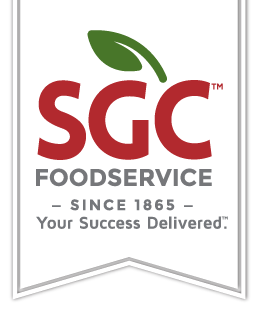While some experts have suggested that the growth in meat alternatives may represent a temporary trend, consumers seem committed to plant-based foods.
The rapid expansion of the alternative meat and plant-based food market is changing how consumers eat and restaurants plan their menus.
Demand for plant-based food is already pushing restaurant owners to change the products they serve. The impact can be felt industrywide, and further growth may reshape things even more over the next few years.
Explosive Growth in the Plant-Based Food Market
Global retail sales of plant-based foods are on track to be worth as much as $162 billion by 2030, up from $29.4 billion in 2020, according to a new report from the Bloomberg Group. It would make up 7.7 percent of the global food market at that value.
Other financial analysts are similarly optimistic, forecasting significant growth in plant-based food over the next few years.
The market's largest sector is plant-based dairy—primarily milk alternatives like grain and nut milk. However, some industry observers predict meat alternatives to grow rapidly and become the largest market segment by value. Future innovations, like lab-grown and 3D-printed meat products, may disrupt this growth.
While some experts have suggested that the growth in meat alternatives may represent a temporary trend, consumers seem committed to plant-based foods.
While just 15 percent of consumers adhere to a vegetarian or vegan diet, a growing demographic of flexitarians is likely driving market growth. Around half of all consumers say they are eating more plant-based foods than last year, and 62 percent say they eat meatless meals at least once a week. These consumers aren’t eating meatless meals all the time, but they do buy plant-based foods regularly and sometimes swap them for meat products.
The growth in the market has primarily been driven by these shoppers and restaurant customers, who are adopting plant-based foods without pivoting to a new diet.
This shift in consumer preferences may be due to growing awareness about the environmental impact of meat and dairy, health concerns, and the rising price of meat. The taste and quality of new plant-based foods may also be helping drive new purchases.
Environmental concerns seem to be driving growth, particularly among younger consumers—like millennials and Gen Zers—who are increasingly interested in sustainable goods.
Consumers Expect Meat Alternatives and Plant-Based Options
This change in preferences could have significant implications for restaurant owners over the next few years. As eateries and major fast-food chains adopt plant-based options, consumers may come to treat them as the norm and businesses that do not offer them as unusual.
Restaurant owners can take advantage of the growing interest in plant-based food and future-proof their menus by researching or adopting these items. As the industry recovers from COVID-19, adding these alternatives to menus also may help drive consumer interest and bring in new customers.
Plant-based items may be especially helpful in attracting flexitarian, vegetarian, and vegan customers looking for local restaurants with meat alternatives. They may be particularly popular among customers who want to consume less meat but don’t necessarily want a conventional vegetarian or vegan option.
However, adapting to this new market may be challenging for chefs and owners who do not have experience with plant-based foods. This especially applies if they want to offer plant-based items primarily as an alternative or replacement for real meat.
The texture, taste, and cooking properties of meat alternatives are often noticeably different than the foods they replace. Chefs may also find that milk alternatives taste or behave differently than the dairy products they typically work with.
It is possible to recreate real meat or dairy-based dishes with plant-based alternatives, but creativity and experimentation may be necessary. Planning time for recipe development and research may be critical for chefs wanting to add plant-based menu items.
Rising meat prices and ongoing attempts by alternative food manufacturers to achieve price parity may also make plant-based food an option for businesses looking to save money.
Even if plant-based alternatives never become cheaper than real meat, more affordable choices may help restaurant owners add these options to their menus without increasing prices or budgeting more for ingredients.
Why the Future of Plant-Based Food Matters to Restaurants
Customers are rapidly adopting new plant-based food items. Demand for meat alternatives is growing quickly — likely due in part to consumers looking to reduce meat consumption due to concerns about health or sustainability.
Restaurant owners can take advantage of this new trend to help drive growth and speed up the recovery of their businesses from COVID-19’s impact. Plant-based options may draw customers who are vegetarians, vegans, or simply interested in eating less meat.
While there may be a learning curve involved with cooking plant-based foods, the benefits could outweigh the potential costs that come with adopting them. Restaurant owners would be wise to make this trend a permanent part of their menus.

